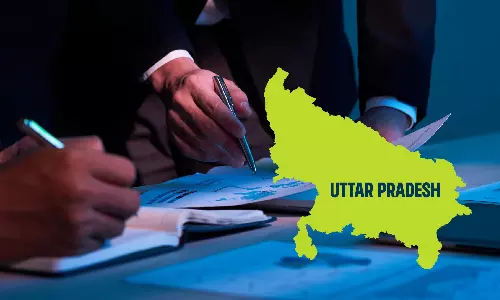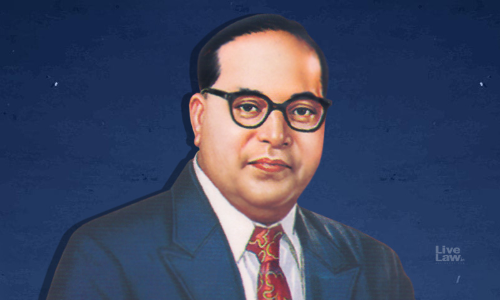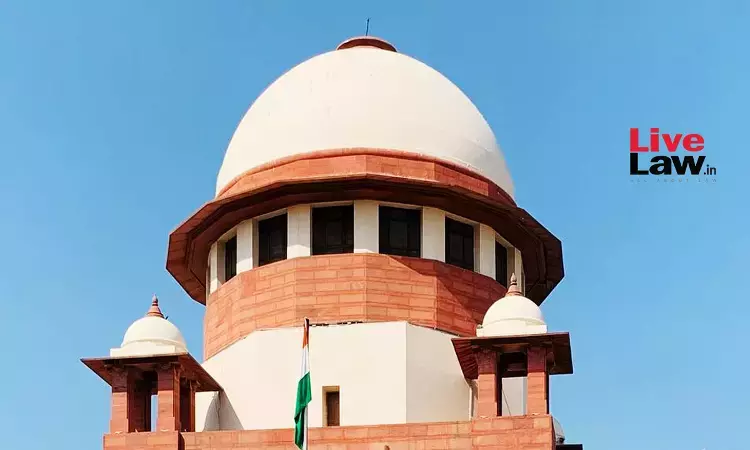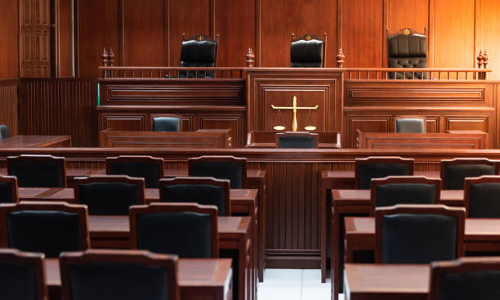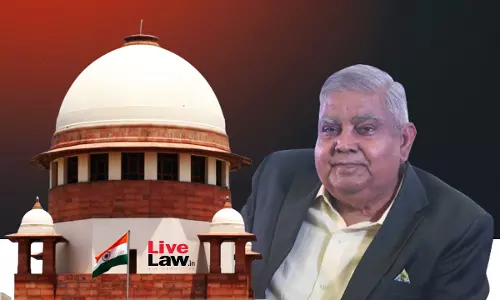Eugene Wambaugh’s Inversion Test And Its Applicability To The ‘Right To Privacy’ Judgement of the Supreme Court of India
The Judgement of the Supreme Court of India in the case of KS Puttaswamy (Retd.) & Ors vs Union of India[1] has rightly been heralded as a Constitutional Landmark in the ever-evolving horizon of Fundamental Rights Jurisprudence.Tracing the position of Law, right from the timeless opinion of William Pitt, The Elder, in Semaynes Case[2], to the expositions of Brandeis. J, in his famous...
The Judgement of the Supreme Court of India in the case of KS Puttaswamy (Retd.) & Ors vs Union of India[1] has rightly been heralded as a Constitutional Landmark in the ever-evolving horizon of Fundamental Rights Jurisprudence.
Tracing the position of Law, right from the timeless opinion of William Pitt, The Elder, in Semaynes Case[2], to the expositions of Brandeis. J, in his famous article in The Harvard Law Review[3] to the decisions of the United States Supreme Court in Olmstead[4], Griswold[5], Katz[6], Roe[7] and finally concluding in the dictum in Jones[8], the 547 page judgement was absolutely thorough in approach and left no stone unturned.
What it will be remembered for is, quite obviously, acknowledging that the ‘Right to Privacy’ exists specifically in Article 21 of the Constitution of India[9] and in a manner, permeates the entire Chapter on Fundamental Rights in the Indian Constitution. The decision was absolute and emphatic, as it represented the concurrence and agreement of a bench consisting of 9 honourable Judges of the Supreme Court who delivered 6 independent opinions of the matter, all in agreement with the proposition that the ‘Right to Privacy’ exists in the Constitution of India.
While celebrating this verdict is justifiable, the circumstances that necessitated the constitution of a 9 member bench, must also be kept in mind.
A judgement rendered by the Supreme Court of India in the year 1953, in the case of MP Sharma vs. Satish Chandra,[10] interpreted the scope and applicability of the right under Article 20(3) of the Constitution of India[11] in the context of the Executive’s power to conduct searches and seizures under necessary circumstances. In the aforementioned context, B Jagannadhadas. J, speaking for the bench, put it thus:
“…A power of search and seizure is in any system of jurisprudence an overriding power of the State for the protection of social security and that power is necessarily regulated by law. When the Constitution makers have thought fit not to subject such regulation to constitutional limitations by recognition of a fundamental right to privacy, analogous to the Fourth Amendment, we have no justification to import it, into a totally different fundamental right, by some process of strained construction...[12]” (Emphasis supplied)
This remark with regards to the Right to Privacy, interestingly, appears only once in the entire Judgement and was made with reference to the power of search and seizures being an overriding power exercised by the State for the purpose of social security. This power, moreover, was found not to be hostile to Article 20(3) of the Indian Constitution by their Lordships.
This observation, however, was interpreted by those opposed to the idea of a ‘Right to Privacy’, as having implied, in absolute terms that ‘Right to Privacy’ did not exist under the Indian Constitution.
Therefore, the fundamental question before their Lordships who sat to adjudicate the Puttaswamy matter, was to ascertain if this observation of Justice Jagannadhadas constituted the Ratio Decidendi in the MP Sharma decision.
‘Eugene Wambaugh’ and ‘The Inversion Test’
Eugene Wambaugh, a professor at The Harvard Law School, published in the year 1892 a classic textbook called ‘The Study of Cases’.[13] This textbook propounded, inter-alia, what is known today as the ‘Wambaugh Test’ or the ‘Inversion Test’ as a means of judicial interpretation.
The ‘Inversion Test’, is used primarily to distinguish and identify the Ratio Decidendi in any Judgement. The central idea, in the words of Professor Wambaugh is as under:
“In order to make the test, let him first frame carefully the supposed proposition of law. Let him then insert in the proposition a word reversing its meaning. Let him then inquire whether, if the court had conceived this new proposition to be good, and had had it in mind, the decision could have been the same. If the answer be affirmative, then, however excellent the original proposition may be, the case is not a precedent for that proposition, but if the answer be negative the case is a precedent for the original proposition and possibly for other propositions also.”[14]
Therefore, the application of the ‘Inversion test’, in a step-by-step manner, is as follows:
- The first step is to frame the supposed proposition of law, which is considered to be the Ratio of the case decided
- Now, the proposition is to be ‘inversed’ or its meaning ‘reversed’ – In Application, the proposition is simply to be removed from the context of the Judgement, as if it were non-existent
- If the decision of the case could still have been the same, even without this proposition, then the proposition, however excellent it seems, is not to be regarded as the ratio of the case.
Other jurists, while adopting the ‘Inversion Test’, have followed Professor Wambaugh, in treating the Ratio Decidendi as something that is absolutely necessary to the decision. “In order that an opinion may have the weight of a precedent”, according to John Chipman Grey[15], “It must be an opinion, the formation of which, is necessary for the decision of a particular case”[16]
Therefore, the Test, in essence, is to pick out the proposition believed to be the Ratio Decidendi, remove that proposition from the Judgement or reverse its meaning, and to then observe whether the judgement, in the absence of the proposition, still holds good. If the Judgement stands, even without the proposition, then the proposition, however important and ‘excellent’ it seems, is not the Ratio Decidendi.
Only when the Judgement fails in the absence of the proposition, can the proposition be regarded as the ‘Ratio Decidendi’ of the Judgement.
Applying the ‘Inversion Test’ to the MP Sharma Case
The pointed focus in the MP Sharma matter was whether searches violated the fundamental rights of the petitioners under Article 19(1) (f)[17] and Article 20(3) of the Constitution.
The charge of violating Article 19(1) (f) was rejected outright by the bench. With regards to Article 20(3) of the Constitution, holding that the guarantee against self-incrimination was not offended by a search and seizure, the court opined as follows: “When the Constitution makers have thought fit not to subject such regulation to constitutional limitations by recognition of a fundamental right to privacy, analogous to the Fourth Amendment, we have no justification to import it, into a totally different fundamental right, by some process of strained construction”[18]
The Court repelled the argument that a search for documents, compelled a person accused of an offence to be witness against himself in the following words : “there is no basis in the Indian law for the assumption that a search or seizure of a thing or document is in itself to be treated as compelled production of the same. Indeed a little consideration will show that the two are essentially different matters for the purpose relevant to the present discussion. A notice to produce is addressed to the party concerned and his production in compliance therewith constitutes a testimonial act by him within the meaning of Article 20(3) as above explained. But a search warrant is addressed to an officer of the Government, generally a police officer. Neither the search nor the seizure are acts of the occupier of the searched premises. They are acts of another to which he is obliged to submit and are, therefore, not his testimonial acts in any sense.”[19]
Therefore, their Lordships were of the opinion, that unlike a notice to produce documents, which is addressed to a person and whose compliance would constitute a testimonial act, a search warrant and a seizure which follows are not testimonial acts of a person to whom the warrant is addressed, within the meaning of Article 20(3).[20]
Nowhere else in the judgement is there any mention of the scope and Applicability of the Right to privacy. Even in this instance, the ‘Right to Privacy’ was viewed only on the touchstone of Article 20(3) of the Constitution and not in the context of any other Part III protection.
This is where the ‘Inversion Test’ of Professor Wambaugh gains importance. If we were to take the observation extracted herein above as the proposition considered to be the Ratio Decidendi of the case, and apply to it the ‘Inversion Test’, what would be the result?
Let us for the sake of application, now consider that the Right to Privacy, was indeed a Fundamental Right, even during the time the Judgement was being authored. This would effectively ‘inverse’ the proposition, that there was no recognised Right to Privacy under the Indian Constitution.
Would the existence of the Right to Privacy have altered the Judgement?
The answer would have to be in the negative. With regards to the right to perform a search and seizure under the orders of a Magistrate, the authorised officer himself conducts the search of the premises. Therefore neither the search, nor the seizure can be said to be a testimonial act of the occupier of the searched premises. That being the case, the right under Article 20(3) can definitely not said to be violated by the occupier.
In this context, even if there did exist a right to Privacy, the power of search and seizure, being an overriding power of the state for the purpose of ensuring social security, would not have altered the legality of the search order. Therefore, notwithstanding a Right to Privacy, the outcome of the case, being that the search and seizure did not constitute a violation of the right under Article 20(3) would still hold good.
Apart from the Inversion Test, it may be noted that the Right to Privacy was tested only under the lens of Article 20(3) and not under the touchstone of any other Article such as Articles 21, 19, 25. Therefore, even logically speaking, an observation made in a completely different context, could not have altogether washed away the Right to Privacy, even though the Judgement did carry the force of 8 honourable Judges of the Supreme Court.
The time tested ‘Inversion Test’ therefore, leads us to only one conclusion: The Dictum in MP Sharma qua the Right of Privacy could only have been an Obiter Dicta, for it definitely could not have constituted the Ratio Decidendi.
A validation of the result is also expressly evinced from the words of Justice Chelameswar – “M.P. Sharma is not an authority for an absolute proposition that there is no right of privacy under our Constitution; and such is not the ratio of that judgment.[21]”
[1] WRIT PETITION (CIVIL) NO 494 OF 2012
[2] 77 ER 194
[3] 4 Harv. L. Rev. 193
[4] Olmstead vs. United States, 277 U.S. 438 (1928)
[5] Griswold. vs Connecticut, 381 U.S. 479 (1965)
[6] Katz vs. United States, 389 US 347 (1967)
[7] Roe vs. Wade, 410 U.S. 113 (1973)
[8] United States vs. Jones, 565 U.S. 400 (2012)
[9] Article 21 - Protection of life and personal liberty - No person shall be deprived of his life or personal liberty except according to procedure established by law
[10] AIR 1954 SC 300
[11] Article 20(3) - No person accused of any offence shall be compelled to be a witness against himself
[12] At Paragraph 17
[13] Eugene Wambaugh, The Study of Cases (Boston: Little, Brown, & Co., 1892)
[14] at Page 17
[15] Another distinguished jurist who served as a professor of law at The Harvard Law School
[16] See ‘The Nature and Authority of Precedent’ by Neil Duxbury, Cambridge University Press, 2008
[17] Now omitted
[18] Supra
[19] See Paragraph 17
[20] See the Judgement of Justice DY Chandrachud in the Puttaswamy Case, at Paragraph 25
[21] See the Judgement of Justice Jasti Chelameswar in the Puttaswamy Case, at Paragraph 7
K.V.Kartik Subramanian was a former Law clerk to the Hon’ble Chief Justice of the Madras High Court and currently works as a Law Clerk in the Supreme Court of India with The Hon’ble Mr. Justice Sanjay Kishan Kaul.
[The opinions expressed in this article are the personal opinions of the author. The facts and opinions appearing in the article do not reflect the views of LiveLaw and LiveLaw does not assume any responsibility or liability for the same].


